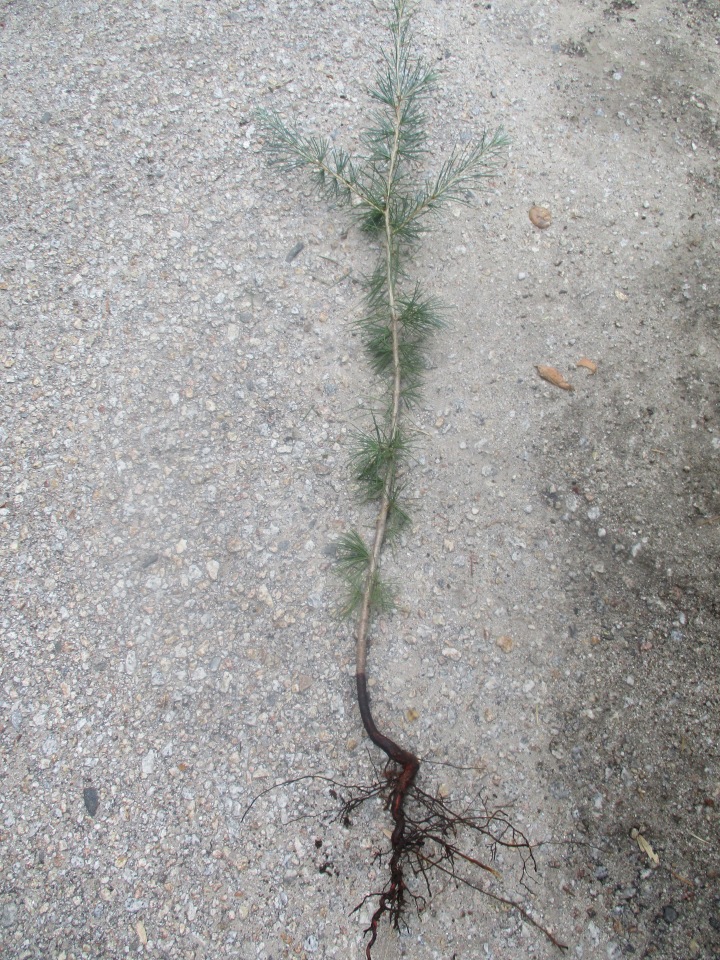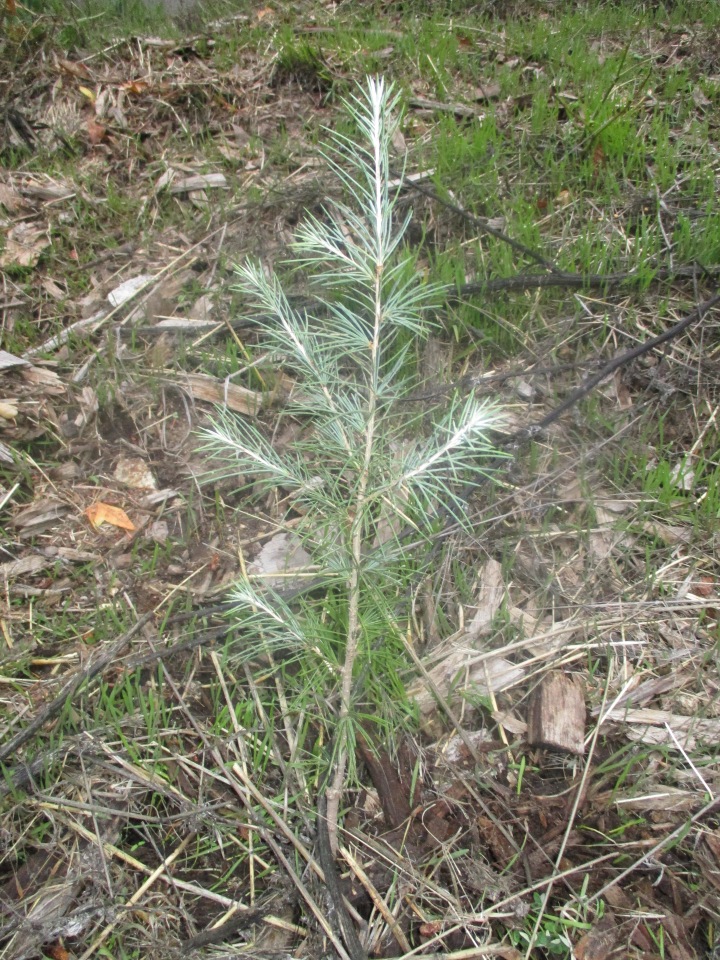Deodar cedars that were featured in the gardening column about two weeks ago, https://tonytomeo.com/2018/11/27/deodar-cedar/ , live in a small grove adjacent to a building that I work out of. They need a bit of pruning for clearance from the roof, but are otherwise rather nice and healthy specimens.
They are also prolific. Quite a herd of seedlings is developing on the ground below. None of the individual seedlings are more than just a few years old, which suggests that the area was cleared of seedlings a few years ago. The area needs to be cleared of seedlings again, before they grow big enough to become a messy thicket.
Part of another landscape in another area happened to be in need of a few deodar cedars. There were two established specimens there already. They suit the situation so well that more are desired. However, new trees are expensive, and because there is no irrigation system in that particular site, they would need to be watered very regularly by hose until they get established.
Well, you can guess what happened. We pulled up several of the seedlings that needed to be pulled up anyway, and simply plugged them into the site where more deodar cedars are desired. It was done just prior to rain, so the relocated seedlings did not even need to be soaked in. They were pruned so that they would not desiccate so readily. We planted way more than necessary because there were plenty to spare, and also because we expect that several will not survive the process. We also expect that we will likely need to cut down a few later because, although some will not survive, too many probably will. Because they are just tiny seedlings, they will get established more efficiently than canned nursery stock, and will not be so sensitive to lapses of irrigation.
Although way more than necessary were relocated, they were not even a quarter of what was available in the original herd. More than three quarters of the herd remain available to be planted elsewhere. More will likely be relocated to other parts of other landscapes before the rainy season is half way finished. A few will be canned and put into the nursery. Whatever we do to them should be done in the early part of the rainy season to take advantage of the weather while they get established. We prefer to relocate the larger seedlings first, so that those that remain will be the smaller seedlings that will take longer to get too big to move if they must wait until next year to be relocated.
This is actually old technology, and how tree seedlings were pulled and plugged to enhance the production of woodlots since ancient history. While undesirable seedlings were pulled and discarded, more desirable seedlings that happened to be crowded around the parent trees were pulled up and plugged in more uniformly over a larger area.
1. seedlings in the ground below the parent trees
2. parent trees
3. bundle of seedlings
4. unpruned seedling
5. same seedling pruned
6. seedling in new location
This is the link for Six on Saturday, for anyone else who would like to participate:
https://thepropagatorblog.wordpress.com/2017/09/18/six-on-saturday-a-participant-guide/
Wonderful trees that will have a new life now …I’d love to have one here.
LikeLiked by 1 person
Oh, if it were not illegal to do so, I would send a few! We happen to be in a region where Phytophthora ramorum is prevalent, and even if it were not, I can not sen plant material so far away.
LikeLiked by 1 person
These are lovely feathery things. Glad you’re transplanting!
LikeLiked by 1 person
They grow up into distinguished conical trees with grayish foliage. They happen to be well suite for our particular applications.
LikeLiked by 1 person
Great to know the baby trees will be put to good use 🙂
LikeLiked by 1 person
Yes; it would be nice if they all get good homes.
LikeLiked by 1 person
Such beautiful trees and all that potential for more amazing mature specimens, a lovely thought.
LikeLiked by 1 person
Here in the redwood forests, there is not much need for more trees. However, we have a few spots where redwoods would either not work out well, or would not be happy.
LikeLiked by 1 person
A couple of days ago, I stood under a deodar estimated to be 150 years old, a majestic venerable tree. I’m glad you’re planting the seedlings.
LikeLiked by 1 person
I am pleased that they will become productive members of the landscape. We do not often get an opportunity to add more trees here. It is nice that these worked out the way that they did.
LikeLiked by 1 person
I guess that timing the move is crucial where you are. Apart from high Summer, I am able to move desirable seedlings whenever I like, but don’t do it as much as I should. Finding an appropriate spot is the trickiest bit in London.
LikeLiked by 1 person
Timing is very important here because the rainy season is so distinct. The trees are most dormant during the rainy season anyway. I have pulled and plugged other types of plants late, and needed to water them after the rain stopped.
LikeLike
A perfect recycling story and a neat way to get a six at this time of year! Very useful to see the pruning stage – genuinely!
LikeLiked by 1 person
The pruning is more of cutting back, just to decrease the foliar surface area. The relocated seedlings can not sustain all of their original foliage after such root disruption. It is like cutting the leaves of rhododendron cuttings in half to limit the evapotranspiration rate. It looks weird, but it works.
LikeLike